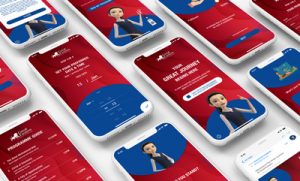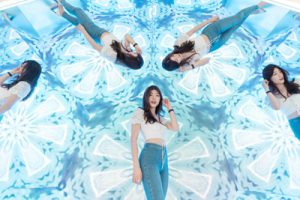Innovation: an all-inclusive term for introducing an entirely new solution to a problem or an approach that brings a fresh take on existing concepts.
It is not something to be taken lightly. Without innovation, we would not be enjoying the luxuries of smartphones that have capabilities far greater than its predecessors from 10 years ago. Recent trends like online shopping and e-scooters would not exist and, to many people, the thought of not browsing a fashion catalogue from the comfort of their homes can be distressing.
Adapting new technologies from old concepts is a form of innovation: wireless earpieces came about because of the discomfort a wired earpiece brings and cloud computing emerged by giving data “wings” to allow it to be accessed at any location.
Innovation requires an individual to think of unique methods to tackle a problem. It requires a creative mindset to solve problems in a meaningful way. Often times, it is the key to success for budding companies trying to kickstart their businesses or for conglomerates to keep up with rising trends.
What is Experiential Technology?
Experiential technology is something which enhances the experience of the user. It better engages the consumer by imparting a more immersive experience through new age technology. Companies that wish to form a stronger connection with their audience would profit enormously as the concept is still fairly novel and can be utilised to bring flare to a brand’s image.
Virtual Reality (VR), Augmented Reality (AR) and Mixed Reality (MR) form the spectrum known as reality technology. In addition, concepts like radio-frequency identification (RFID) and projection mapping are considered experiential technology as well, among others.
The 3 reality technologies are often treated as one in the same. For starters, we will make the concepts distinct from each other to acquire a more in-depth understanding and allow ourselves to differentiate one from the other.
Virtual Reality:
Objectively, virtual reality is the most immersive. Users are transported to a completely different world via VR headsets and get to indulge in a realm unlike real life. This fictional land is interactable and players can perform actions virtually that they couldn’t in real life. Actions like flying, wielding weapons to fight monsters and having tea with the prime minister are all possible with virtual reality.

One of the most prominent activities that utilise VR technology is Beat Saber. By transforming the 2 controllers into pseudo lightsabres from the acclaimed movie series “Star Wars”, players are tasked to hit the incoming blocks according to the rhythm of the music. Walls occasionally approach the player and will force them to evade by moving their bodies in all directions. The game is supported by its own community as players may also contribute songs and map it themselves.


A VR project for the cosmetic corporation, NARS, was crafted by Trinax. Participants were given a comprehensive brand journey that showcased the history of NARS and their various product lines through a multitude of interactable objects in the virtual environment. The objects in view can be selected and will expand out into various operations like applying make-up on a woman’s face and initiating an eye-catching lipstick animation.
The potential for VR is endless and the next few decades could see it transform our daily lives significantly. Common activities like shopping and socialising with friends could be done through VR, attached with a sizable amount of realism. If it is realistic to our senses, the need to physically step out of our houses decreases in necessity.
Augmented Reality:
Augmented Reality (AR) derives its name from the word “augment”. To augment, in the case of AR, is to overlay computer generated objects onto the real world. The apparatus commonly used to facilitate AR projects are mobile devices and tablets such as iPhones and iPads.
First, The device’s camera will display its footage on-screen. Digital assets will then appear on the screen, sometimes only appearing when certain real world objects are in view. The user can interact with these augmented items and perform a variety of functions that serve some sort of unique purpose.

With exceptional foresight, Ikea was one of the first to take advantage of Apple’s ARkit by launching their own app in collaboration with Apple. The AR app, known as Ikea Place, allows consumers to augment 3D models of Ikea’s furniture into their homes. Users can gauge how the piece of furniture looks in any particular area and gain help in deciding factors such as suitability with the style of the room and if the size is appropriate. It will be unnecessary to imagine the furniture in different rooms and check the dimensions with Ikea’s AR app.


Trinax partnered with hillV2, a shopping mall by Far East Organisation, to develop an AR game compatible for both iOS and Android. The theme is centred around a lush forest where players will have to find butterflies hidden within. A canvas with a forest design will be showcased to the participants and they will have to search for butterflies by panning the camera across the canvas. Once found, tapping the butterfly will grant the user points that they will accumulate for their total score.
AR technology has gained widespread popularity through the immensely popular game, Pokémon Go. Consequently, many companies have started to venture towards incorporating AR technology into their consumer touchpoints to convey a modern impression that can be seen as staying current in this day and age. AR experiences are applicable in a variety of situations and will prove beneficially to a company’s marketing endeavours.
Mixed Reality:

With the understanding of VR and AR laid out, we can grasp the idea of mixed reality (MR) with ease. MR is a combination of concepts from VR and AR. It uses a headset that encases the peripheral vision of the user with a layer of glass – similar to a pair of spectacles – which allows the blending of computerised functions in a real world environment.

At work, an employee who’s not in the office can participate in meetings by wearing a MR enabled headset. Features like hand gestures to alter the augmented object and view documents on the headset can be done to simulate a realistic experience where the user is uninhibited from being in a different location. That is what MR aims to be, and it would be revolutionary once the technology reaches that goal.
MR strikes a balance between VR and AR where it is more immersive than traditional AR technology but will never reach the immersion levels of VR. However, Its potential real-life benefits give it sufficient demand for developers to continue pursuing and improving the technology to a level where people can use it as their personal assistant. If it reaches a level where a pair of MR lenses can help people do daily activities like send emails and surf the internet, it has the potential to replace our smartphones due to it’s efficiency and seamless transitions.
Projection Mapping:
One way of bewildering your audience is to give them a feast for the eyes that makes you distinct from the competition. Projection mapping is one such concept where that can be achieved.

Having its roots from traditional projection technology, i.e. projectors used in classrooms and meetings, it leverages the existing infrastructure to produce 3D displays that can be manipulated through input by the user. The projections can be adapted for uneven or jagged surfaces and calibrated to form a magnificent projection. Also, it can be dynamic and change according to user preference, making it more interactive and engaging when compared to a typical projection display.

Australia decided to implement a large scale projection mapping exhibition on one of their most iconic attractions, the Sydney Opera House. Held yearly since 2011, spectacular designs are projected onto the building’s exterior to captivate locals and tourists alike. The projections are not just static displays, but move along the uneven shape of the opera house to create an alluring display for the eyes.

For a more interactive take on projection mapping, Trinax partnered with Formula 1 (F1) to produce a customisable projection map on a race car. The life-size F1 car was housed in a large projection mapping container where users could customise the car according to their preferences. Through a microsite, a plethora of colours and patterns could be selected. The personalised designs are then pushed into the projection mapping container and illuminate the sports car according to the user’s preferences.
Projections are a concept that is fundamentally used in plenty of situations. However, Projection Mapping is a step above and utilises current generation technology to impress the audience in ways a traditional 2D display never will. The capacity to account for uneven surfaces produces visuals that are still considered breath-taking to this day.
RFID:

This is the most common form of technology on this list currently being propagated in businesses. Radio-frequency identification, or RFID, is a technology that works similarly to barcode scanning and is used in processes like personnel tracking and inventory management. The difference being the use of chips and antennas to communicate with the RFID scanner, also known as the RFID tag. This allows flexibility when scanning the item, as the RFID tag need only be in close proximity to the scanner to detect it and does not require alignment, unlike barcode scanners.
(Infographic for Starhub’s Online Music Store, source: behance.net)
In the past, Starhub wanted to advertise their online music store and initiated their advertising campaign, “Musical Fitting Rooms”. Partnering with high profile fashion retailers such as Topshop and Uniqlo, the vendor’s clothes were tagged with RFID chips and the fitting rooms had RFID readers installed. This is to enable detection for the variety of RFID apparel once they are in the fitting room. When the customer changes into the fresh new clothes, music starts to play that fits the style of the garments. A text message informing consumers that the music being played can be downloaded for free on Starhub’s online music store will pop up. Not only does it advertise their online music store, it helps the customer decide if the style of clothing is suitable.

Trinax collaborated with The Macallan to leverage RFID in a creative way. To find the type of whisky best suited for the consumer’s taste, customers went through a scent test. A number of scents, ranging from oak to toffee, are placed in jars. Users can smell the contents of the jar, select their preferred scents by scanning it on an RFID reader and receive a list of whiskies that will suit their taste buds. This unorthodox method of using RFID is a novel approach and is among the first of its kind.
Automated Retail:
What drives automated retail is efficiency.
At a typical brick-and-mortar store, products for sale will line the shelves. The patron will slowly browse through the catalogue, wondering about a product’s specifications that are not displayed. After pondering for some time, a sales associate is called to enquire on the missing information. The employee thinks for awhile, then walks away to ask a senior associate regarding the matter. When the staff returns, your enquiry is finally answered. You’ve decided to purchase the product and asks if the correct size is available. Again, the salesperson proceeds to the storeroom to check their stock. After what seems like an eternity, the sales rep finally comes back and says “No, we don’t have your size right now.”
That entire process could be avoided with automated retail.
The concept of automated retail is simple enough. By setting up a touch screen enabled kiosk, customers could browse the entire list of products a vendor has to offer. If it’s connected to the vendor’s database, information like availability of sizing or certain colours for products can be updated in real-time to the kiosk. This method of sales is significantly more efficient and requires less intervention from sales associates, allowing companies to spend less on hiring manpower.

McDonalds Singapore has launched self-ordering kiosks in many of their outlets around the country. In the past, long lines of customers waiting to place their orders plagued the F&B establishment. Nowadays, the process of ordering and handing out orders is quicker and alleviates the need for a cashier to be ready every second.

Audi worked with Trinax to create an automated retail kiosk situated in their showroom. The exterior is sleek with a black majority and silver stripes for finesse. The colour scheme was chosen to match Audi’s brand image. Visitors looking for Audi merchandise can enter the showroom, approach the automated retail kiosk, find the item their looking for with the touchscreen and pay for it in any form of cashless transaction. Customers who just want Audi merchandise need not wait for a sales executive to handle their queries. Instead, they can make use of the hassle-free automated retail kiosk.
Experiencing Innovation
In the coming years, many of these technologies will further develop into products that we can use on a daily basis. Some will take longer than others – MR is still in its early stages, not meant for consumers at the time of this writing – but we should never discredit something new just because it is not up to standard now. Let enterprises experiment with it, find solutions to its existing problems and stabilise their apps for the general public.
Any statement against experimentation is a statement against innovation.
Adopting these technologies will be advantageous to a vast array of companies. To understand the perks from a financial perspective, take a look at our article on “5 Ways Experiential Technologies Can Benefit Your Brand”.







